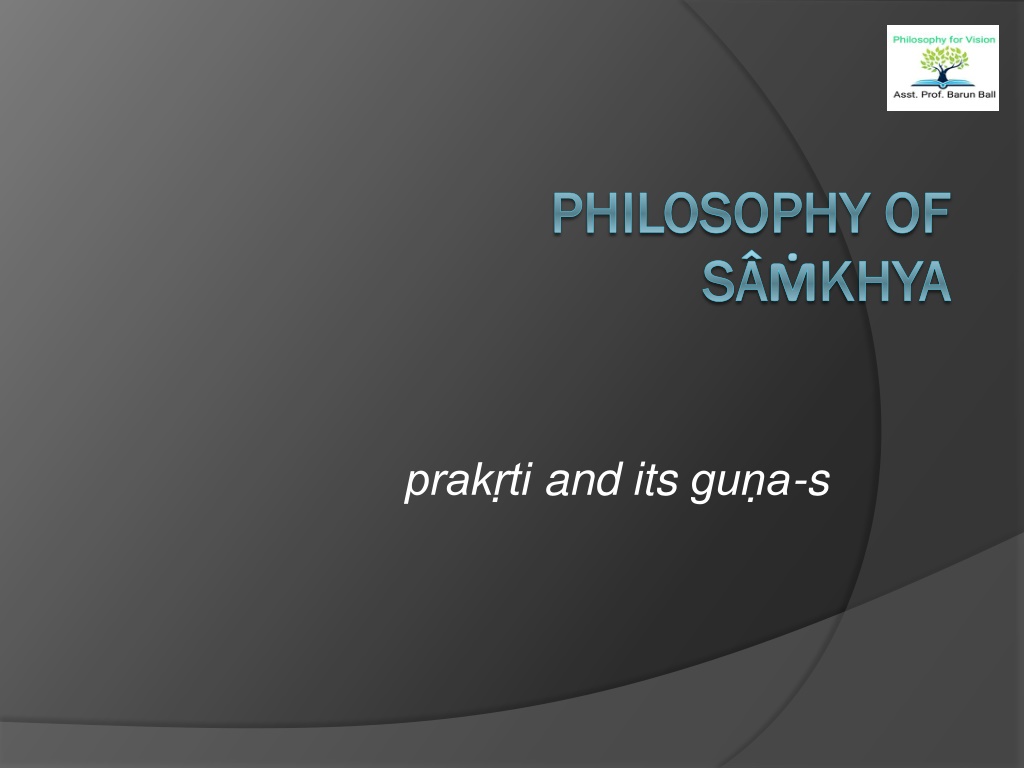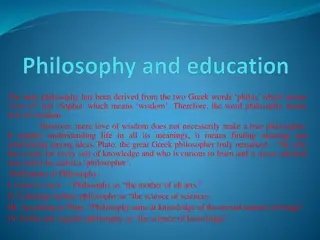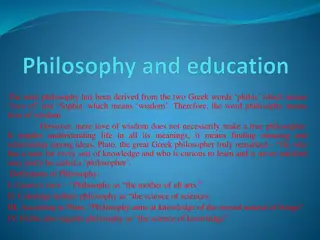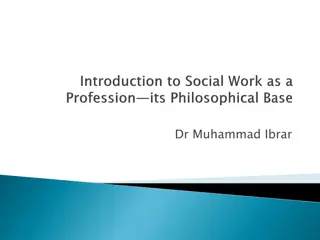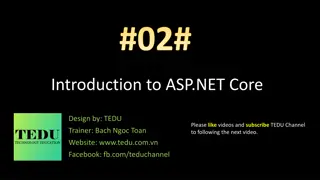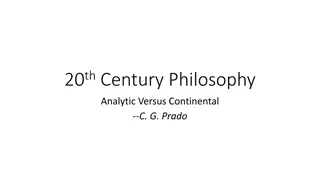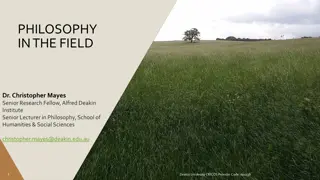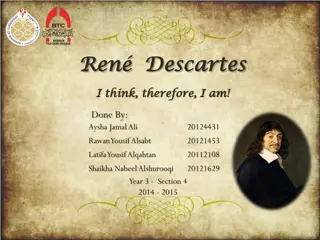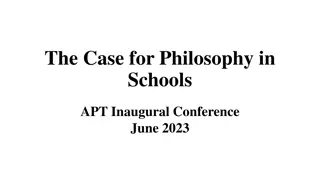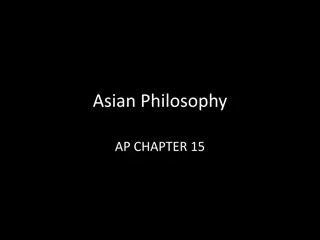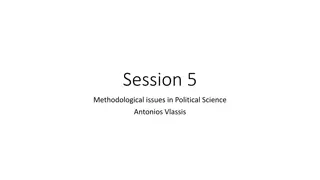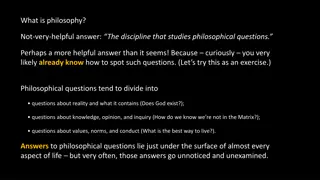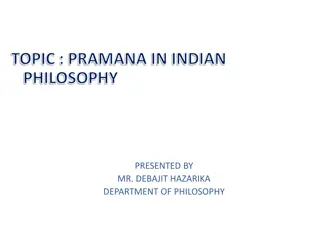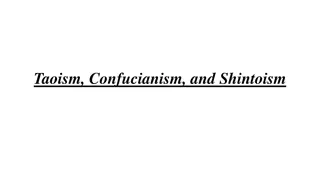Understanding the Core Tenets of Samkhya Philosophy
Samkhya philosophy, one of the oldest systems of Indian philosophy, emphasizes a dualism between prakrti and purusa, with prakrti as the root cause of the world of objects. It maintains a plurality of purusa and remains silent on the concept of God. Prakrti is described as uncaused, independent, absolute, eternal, and is composed of the three gunas - Sattva, Rajas, and Tamas, each responsible for distinct aspects of manifestation in consciousness. Explore the foundational principles and nuances of Samkhya through the lens of prakrti and its gunas.
Download Presentation

Please find below an Image/Link to download the presentation.
The content on the website is provided AS IS for your information and personal use only. It may not be sold, licensed, or shared on other websites without obtaining consent from the author. Download presentation by click this link. If you encounter any issues during the download, it is possible that the publisher has removed the file from their server.
E N D
Presentation Transcript
PHILOSOPHY OF PHILOSOPHY OF S S KHYA KHYA prak ti and its gu a-s
One of the oldest system of Indian Philosophy We find the references to the Samkhya- Yoga doctrines in some of the Upanisads The Chhandogya The Prashna The Gita The Smritis and Puranas
PRAKRTI Samkhya maintains a clear-cut dualism between prakrti and purusa
Root-Cause Prakrti as the root-cause of the world of objects It is uncaused cause As infinite regress has to be avoided
PRADHANA Prakrti is the first principle of this Universe it is called Pradhana
AVYAKTA As the unmanifested state of all effects, it is known as Avyakta
JADA As the unintelligent and unconscious principle it is called Jada
SHAKTI As the ever active unlimited power it is called Shakti
Prakrti is uncaused, independent, absolute, one and eternal
GUNA-S Prakrti is said to be the unity of three Gunas They are Sttva Rajas Tamas
STTVA Sttva literally means real or existent and is responsible for the manifestation of objects in consciousness. It is light and bright. It produces pleasure.
RAJAS Rajas, which literally means foulness, is the princple of motion. It produces pain.
TAMAS Tamas, which literally means darkness, is the principle of inertia. It produces indifference.
PROOFS FOR THE EXISTANCE OF PRAKRTI Samkhya gives five proofs for the existance of Prakrti
BHEDANAM PARIMANAT All individual things in this world are limited, dependent, conditional and finite.
Logically we have to proceed from the finite to the infinite, from the temporary to permanence.
And it is this infinite, unlimited, eternal Prakrti which is the source of this Universe.
SAMANVAYAT All worldly things possess certain common characteristics.
They are capable of producing pleasure, pain and indifference.
Hence there must be a common source from which all worldly things arise.
SHAKTITAH PRAVRTTESCHA All effects arise from the activity of the potent cause.
The activity which generates evolution must be inherent in the world cause. And this cause is Prakrti
KARANAKARYAVIBHAGAT The effect differs from the cause and hence the limited effect cannot be regarded as its own cause.
The effect is the explicit and the cause is the implicit state of the same process.
The effect, therefore, point to a world- cause where they are potentially contained.
AVIBHAGAT VAISHVARUPYASYA The unity of the Universe points to a single cause.
T h a n k Y o u Prof Barun Ball
